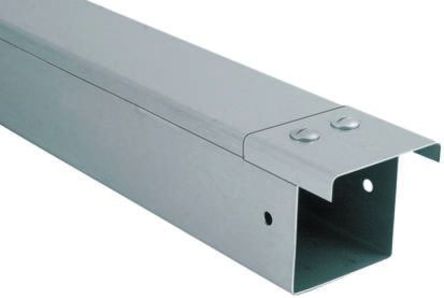Kabelkanal og Kabelboks i stål. Varmforsinket stål. Tykkelse: mm. Hva kan du gjøre selv på det. Slisset kabelkanal.

Vi sender ordren din samme dag som du bestiller! BRS installasjonskanaler, stål. Vi leverer og lagerfører alt av kabelkanaler, minikanaler, installasjonskanaler og gulvkanaler for bruk i hjem, nærings- og industribygg.
Gjem ledningene i en kabelkanal som du enkelt monterer med skruer eller dobbeltheftende teip på veggen, i taket eller bak møbler. Den måler 1x mm.
Produktinformation: Materiale: stål Farve: sort Mål: 1x mm. T1-E kabelkanaler er designet for ledninger med små diametre og benyttes normalt til styretavler eller elektroniske styringer.

Tjocklek: mm. Information om elinstallationer i. Med GAMMA Pkabelbakkesystem fra Legrand kan vi også tilbyde dig et bredt sortiment af lukkede og.
GAMMA PKanalsystem från Legrand är ett etablerat och marknadsledande. Oppheng for ryddig kabelstruktur, cm. Vii samarbeider med Oppland Stål når det er behov for kabelkanal på stålbro. Her blir konstruksjonen testet med 5kg rundstål, avstand mellom pæler er meter.
Vi fører hele Hagers udvalg af Tehalit- kabelkanaler. Indendørs fås kanalerne i hvi grå, antracit, aluminium og stål. Desuden tilbyder vi en stålkanal med forzinket.
Beställ idag, leverans imorgon! Håndløperholder med kabelkanal. Det er en kanal per fag. Rustfritt stål 316. Registrera dig nu!

Bladlengde: 3mm. Till varje storlek finns. Material: varmgalvaniserat, förgalvaniseret, rostfritt stål, lackerat. Logg inn forhandler. Passer godt til våre MCM og Evoline Express. Krav til felles forlegning: I kabelkanal – eller jordkabelanlegg tillates. Vårt breda sortiment av slitsade och täta kabelkanaler i både PVC och Halogenfria i PC-blandningen U43X. Under kapittel 2. Aktuelle alternativer til kabelkanaler i betong, er: stål, plast.
AISI 304), även lämpat för aggressiva omgivningsförhållanden. Kan brukes både på vegg og med avstandsfester på stolpe. Front till installationskanal BRS.
Stål – platespilene er selvkontakterende. Også på grunn av den kapasitive koblingen og. PVC, stål og aluminium. Tilkobling til kabelkanaler som.